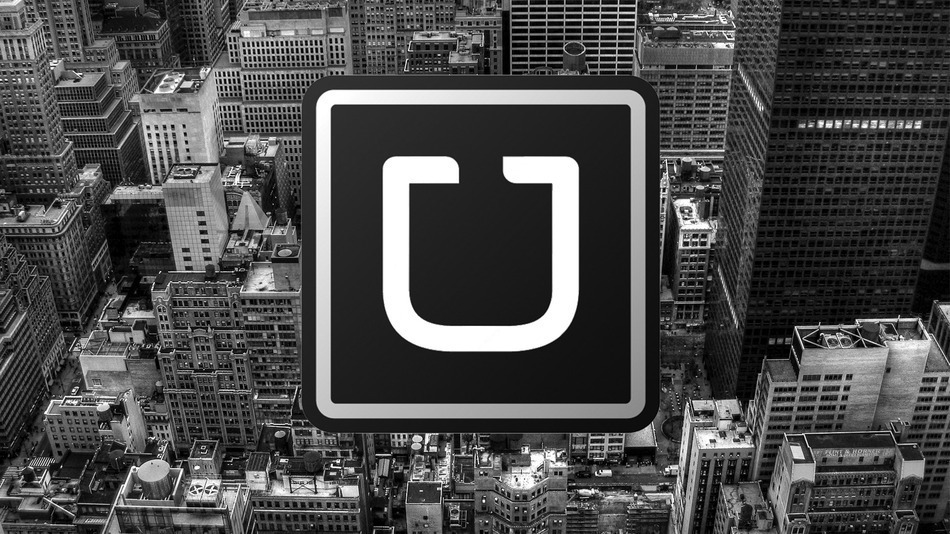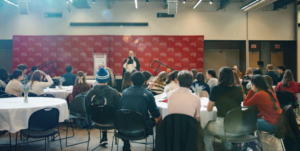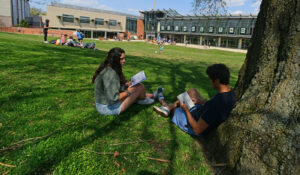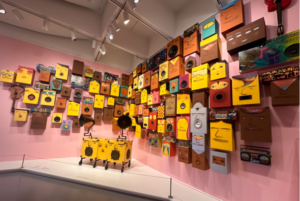Why Walk When You Can Uber?

By Elizabeth Bolchoz
Waking up in a daze, Mary Baggot, a sophomore at The Catholic University of America, checked her phone and immediately panicked. It was 9:48 a.m. and basketball practice started in 12 minutes. Looking at her crutches, Baggot knew getting the half-mile from Reagan Hall to the DuFour Center would take her at least twenty minutes. And despite being injured, her attendance was mandatory. Without thinking twice, Baggot did what she considered to be the most sensible solution- she opened up her Uber app and requested a ride. For five dollars, Baggot was picked up and dropped off at practice within 7 minutes.
Uber, which was founded in 2009, is best known as a service that replaces taxis by allowing people to request, track, and pay for a private driver all within the touch of an app. Currently worth 50 billion dollars, as a result of maintaining continuous growth in cities both internationally and in the United States, the company is most known for its practical rides to the airport, work, and grocery store. But when considering distance and price, students at The Catholic University of America have capitalized on Uber’s convenience for rides that may seem way more extreme in comparison.
Baggot, who claims her knee injury was the reason for taking an Uber a mere 500 yards at the time, admits that the accessibility of Uber has her riding the same short distances regardless of her injury status.
“I don’t really consider distance being a reason to not take an Uber,” Baggot said. “If it is cold out, or snowing, or if my friends and I are just feeling particularly lazy, we’ll take an Uber regardless of how close the destination is.”
Although Catholic University is merely 180 acres in size, students’ choosing the quick ride over a ten-minute walk is not unusual.
Olivia Scannel, a junior living off campus, claims she has “no shame” in her Uber habits and agrees the convenience is what justifies the rides.
“I am literally the Uber queen,” Scannel said. “I use it everywhere. Once I took it from Opus to a class in O’Boyle because I was just too lazy to walk up the hill.”
Scannel said her Uber experience is one that her parents hate due to the costs- despite her spending also going towards the care of her drivers.
“I’ve spent just as much money on buying my drivers’ food as I do on the rides themselves,” Scannel said. “If we stop at McDonald’s or a convenience store, I always make sure the driver gets something to eat.”
Cassandra Ficano, also a junior at Catholic University and a friend of Scannel’s admits how extreme their Uber requests have been when it comes to price. The two friends confess to spending forty dollars on a long ride just for Dunkin’ Donuts coffee. This made the two drinks worth over twenty bucks a piece, once they had paid the Uber and were comfortably sipping back in their rooms.
“Olivia is from Massachusetts and I’m from New York, so we’re used to having Dunkin’ Donuts almost every day. The metro had been closed, and, well, we just really wanted Dunkin’,” Ficano said. “Getting an Uber was the simplest solution.”
Ficano and Scannel are not alone in their incessant Uber spending. Since many of the students rationalize the price of Uber, often ranging from five to ten dollars when venturing around campus, it is easy for the numbers to add up.
“Freshman year my parents explicitly cut me off from Uber,” said junior Mackenzie Gardener. “I had spent over a thousand dollars in rides- and most of them were driving to places less than a mile away.”
Gardener said her severe Uber restrictions have since been lifted, as she is now more conscious about using the app, and also splits the cost with her friend passengers. She has also convinced her parents that while some rides may seem unnecessary, they provide a much safer option than walking. For example, walking back to campus from an off-campus house may only be a couple blocks, but when it is late at night and one is alone, a couple dollars spent on a mile-long Uber ride is the most logical decision, she said.
Although Uber has given students “the simplest solution” to get from one destination to the next, there is no obvious remorse amongst the students’ extreme dependence on the company, regardless of distance and price. And whether this dependence is validated in situations of injury or safety, or necessary in most situations of mere student laziness, it is dependence that Uber is happy with, no doubt.








